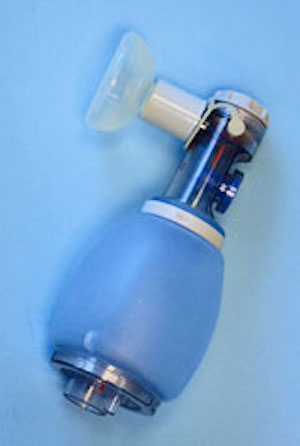Neonatal Resuscitator
PATH
Solution Overview & Benefits
Every year an estimated 4 million babies die in the first four weeks of life. Birth asphyxia/trauma—the condition when a baby does not breathe at birth—is the third most common cause of newborn deaths, accounting for 23 percent of all fatalities. Limited data suggest that deaths due to birth asphyxia have remained relatively unchanged in developing countries. The key to reducing these deaths is the provision of appropriate care to underserved populations during delivery. Approximately 50 million women give birth without a skilled attendant, 99 percent of whom live in low-income countries. Appropriate care for birth asphyxia requires that neonatal resuscitation skills and appropriate technology should be available to all skilled birth attendants and to community-level workers where skilled attendants are not available.
Effective neonatal resuscitation equipment is needed by all birth attendants in order to reduce the danger of birth asphyxiation. Neonatal resuscitator technologies that are affordable and easy to use, clean, and store could increase the use of such lifesaving devices in the developing world. While currently available neonatal resuscitation devices are available in both bag and mask designs and tube and mask designs, their accessibility is limited in some world regions due to poor availability and affordability. The estimated potential impact of widespread introduction and use of neonatal resuscitators could be about one million neonatal deaths averted annually.
History & Development
PATH’s focus is to enhance availability of appropriate devices in low-resource settings, particularly Asia and Africa. PATH conducted a web-based survey of neonatal experts to determine practices and preferences related to neonatal resuscitators in developing countries. PATH also published an inventory of all neonatal resuscitation devices currently available worldwide. PATH then conducted an assessment of the performance and functionality, safety during use and reuse, ease of assembly and disassembly, and device construction of many devices. Particular attention was given to those that are reusable, silicone bag and mask devices that cost less than US$30 each. The results are published in the “Practical selection of neonatal resuscitators: a field guide.” All three documents are available on PATH’s website. In addition, PATH conducted a situation analysis of essential newborn care and services in selected states in India. Results are available upon request.
To understand potential demand and supply and distribution channels of neonatal resuscitation devices, PATH conducted market research in southern African countries and is currently developing advocacy materials to raise awareness about lower-cost, high-quality devices that are available in the region. Further, in early 2009 PATH initiated market research in West African countries of not only resuscitators but also neonatal resuscitation mannequins and suction devices.
Availability
Publicly available: no
Additional Information
Updates
If you are aware of any updates to the Neonatal Resuscitator project please complete the form or send an email to [email protected]
Need help finding solutions that respond to your unique development challenges? Apply through our Project Accelerator service or Contact us directly for needs-based project consulting.
